First comprehensive CASA study of Free ranging African elephant sperm in the wild: What does it take?
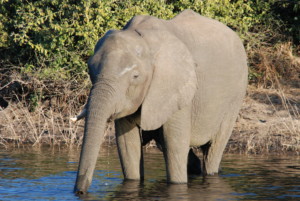
It is seldom realized what it really takes to perform such a formidable research task in the total wilderness. It is not as if there are ten elephants behind bars waiting for semen collection in a zoo or equivalent. Elephants in the wild and particulalrly elephant bulls in musth (glands in head of elephant from which a very smelly oily substance dribble) are apparently in prime breeding condition and highly aggressive and temperamental (Fig. 1) with testosterone reaching 60x more than average. We sometimes had to turn around to avoid these “monsters” coming for us. In this blog I try to give a look behind the scenes from the time that all participants arrive at the game reserve until successful analysis of many semen samples from the wild elephant population have been performed.
One of the main aims of this investigation is to preserve as much of the genetic genome of the African elephant which is threatened in many game parks in Africa. It is accordingly important to cryo-preserve the best sperm of the best bulls for insemination elsewhere and their long term survival. It is crucial that we do everything possible to ensure sustainable African elephant populations are maintained across the continent and with this work contribute to its protection.
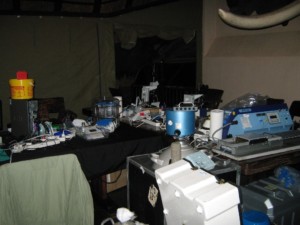
Fig. 2. Setting up the sperm lab the first evening with SCA and freezing equipment in a field laboratory.
The research is usually done in collaboration with a large game reserve and the team consists of well-trained game wardens from the particular park, reproductive biologists that are specialized in analysis of semen, freezing the samples and veterinary surgeons (vets) specialized in handling all facets of wildlife associated with the health of the elephants. A team like this typically consists of more than 30 people. The base camp provides good accommodation for all and at night there is good interaction to discuss the next seven days in the field. Detailed planning and organization takes place from the first evening setting up the sperm lab (Fig. 2) and where to find the best elephants, the ones with best access for the 4 x 4 vehicles. It should be emphasized that the team in this instance involved top vets, scientists, game wardens and various field/lab assistants from South Africa, Germany, France and the USA. It is really a huge international collaborative effort involving many sponsors.
The vets need to work out correct doses of anaesthetic that will be used to dart the elephants, assess the condition of the elephants from the time of anesthesia, ensure optimal conditions during this period and also injecting the antidote that will wake up the elephant eventually.
Helicopters leave early in the morning from the base camp to find suitable adult bulls and then report the location which is often 10 to 30kM from the base camp. Once the support team arrives elephants are darted from a helicopter and this requires a highly skilled pilot with lots of experience (Fig 3.). When the elephant is down the team makes sure the elephant is breathing well, no airways are obstructed, draw blood, take multiple measurements, evaluate the teeth for health and age, draw blood for genetic studies and sample for external parasites (Fig. 4).
- Fig. 3: Helicopter with vet on the point of darting the elephant (Photo from PhD of Ilse Luther who formed part of this study).
- Fig. 4: Beehive of activity once elephant is down.
- Fig. 5: Sonar is performed to check for healthy reproductive system and penis is cleaned for subsequent semen collection.
- Fig. 6: Artificial condom fitted for semen collection.
Sonar is performed of the reproductive structures to ensure all features are normal. An artificial condom is then constructed from a plastic glove to sample sperm during the procedure called electro-stimulation where a probe is inserted in the rectum and the prostate area and adjacent nerves are sufficiently stimulated to produce both erection and ejaculation (Figs. 4, 5 and 6). Semen is typically delivered in fractions from a few mL to 200mL. The moment a good sample is collected it is pre-processed (Fig. 7) before taken by helicopter to the base camp which normally forms part of the game lodge. Usually three to four spermatologists perform the semen analysis in the sperm lab and involved in freezing the best samples for long term storage at -197 ºC.
- Fig. 7: Pre-processing of fractions of ejaculate before helicopter transport to field laboratory at base camp.
- Fig. 8: Within minutes the samples arrive in field laboratory and in this instance is analysed using the SCA system for sperm concentration, motility, vitality and morphology (SpermBlue and BrightVit on left).
The most important information required almost within seconds after arrival of the semen sample in the field laboratory is to know the sperm concentration, percentage motility, progressive motility and also the percentage rapid sperm (Fig. 8). The SCA CASA system is ideally suited for this and one sample can be processed in less than 30 seconds. But many other sperm functional tests such as hyperactivation is also performed using cut-off points determined for automated analysis by SCA. Often four to five samples arrive in one morning. Accordingly, these samples need to be rapidly analysed but moreover provide accurate quantitative information. From this information the best samples are then frozen in egg yolk combinations using a very specialized freezing machine designed for large volumes at a time (See Fig. 2 – blue coloured instrument right hand side of figure).
After all the action there is also time in the evening for team building and finding better solutions to analyze the sperm in future!
Our research paper entitled “Sperm motility, kinematics morphometry and morphology over two seasons in free-ranging African elephant” is accepted for publication and will be published soon.
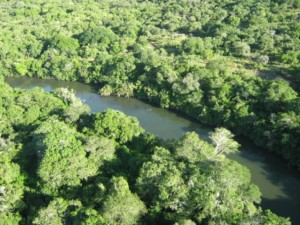
Fig. 9: Typical environment where part of this study has been performed in the “wilderness”.
This paper reports for the first time on quantification of sperm motility and other sperm characteristics in wild African elephant in a large game reserve close to the Kruger National Park in South Africa. Here it was demonstrated that motility characteristics are optimal during the rainy season and coincide with the time that most elephant cows are in estrous. It was particularly the sperm kinematics as determined by the SCA CASA system that was sensitive to establish subtle differences between seasons.
It is comforting to know that the well-known and established German team has used some of these high quality frozen semen samples from Africa to successfully inseminate elephant cows in European zoos and that live calves have been born.
It should be clear that what may seem like a simple article on semen analysis of African elephant in a scientific journal and deciphering sperm quality have apart from its pure scientific merit important applications. Finally, next time you read a paper on particulalrly sperm collection of large wildlife species performed in the “wilderness” (Fig. 9) using free-ranging animals, it takes an enormous effort and co-operation from many disciplines, and expertize from diverse fields and many experts are involved.
Prof Gerhard van der Horst (PhD, PhD)
Senior Consultant
MICROPTIC S.L.



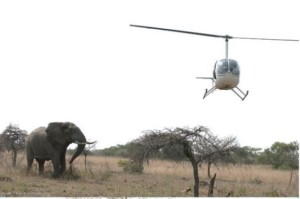
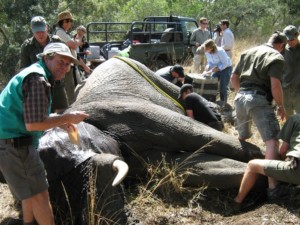
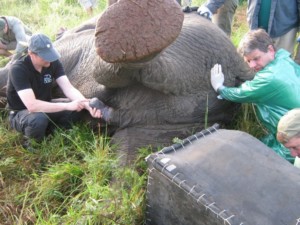
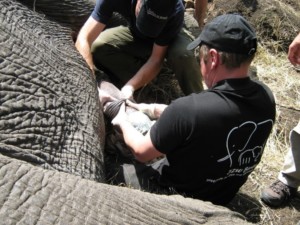
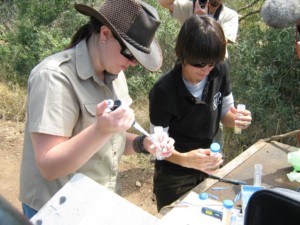
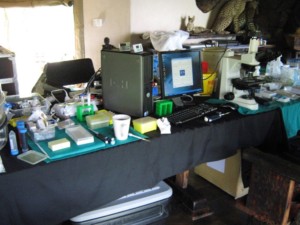

What if elephants in Africa paid more attention?